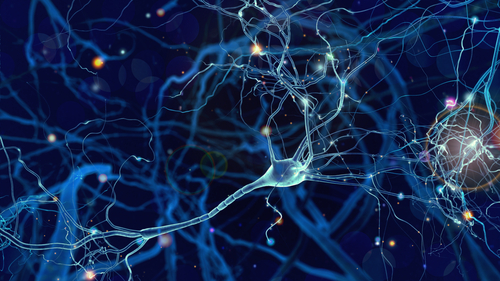Ability to ‘Create’ Astrocytes Supports Their Damaging Role in MS, Like Diseases

An inflammatory environment can turn astrocytes, key supportive cells for neurons, into their killers, fostering the progression of neurodegenerative diseases like multiple sclerosis (MS), a new study shows.
This work, led by researchers at the New York Stem Cell Foundation (NYSCF), created for a first time astrocytes derived from human induced pluripotent stem cells (hIPSCs). The group then placed these cells in an inflammatory environment, and observed what happened.
“Now that we can create this critical brain cell type from any individual’s stem cells and capture its errant behaviors, we can better understand its role in diseases like multiple sclerosis, Parkinson’s, and Alzheimer’s,” Susan L. Solomon, the CEO of the NYSCF, said in a press release.
“This will shed new light on the devastating process of neurodegeneration, pointing us towards effective treatments for this growing group of patients,” Solomon added.
The study “CD49f Is a Novel Marker of Functional and Reactive Human iPSC-Derived Astrocytes ” was published in the journal Neuron.
Astrocytes compose more than half of the cells of the central nervous system (brain and spinal cord), and work as support cells. They help to maintain brain homeostasis (stable equilibrium), provide neurons with metabolic support, enhance the connectivity of neural circuits, and control the brain’s blood flow.
Yet, these cells are also thought to be key players in the onset and progression of neurodegenerative diseases such as MS.
Knowledge on astrocyte biology has mostly come from animal models, namely rodents, since scientists struggle to obtain astrocytes from people.
NYSCF researchers developed a method to generate functional astrocytes that are derived from human IPSCs. (IPSCs themselves are derived from either skin or blood cells that have been reprogrammed back into a stem cell-like state, which allows for the development of an unlimited source of almost any type of human cell.)
They based their work on a previous protocol, which they developed to produce oligodendrocytes — one type of cell capable of producing myelin, the protective layer covering nerve fibers and whose loss triggers MS.
Here, the researchers generated a mix of astrocytes and neurons.
They then conducted a screen to identify a surface protein that could be used to specifically purify astrocytes.
The marker CD49f was found to distinguish astrocytes from neuronal progenitors and neurons. At the genetic level, cells isolated using this marker showed activity of genes characteristic of both mature and immature astrocytes. However, when researchers looked at individual cells, they saw that CD49f was more enriched in mature astrocytes.
The hIPSCs-derived astrocytes expressing CD49f helped in neuronal growth, neural communication, provided metabolism support including glutamate uptake, and secreted molecules (called cytokines) in response to inflammation triggers.
“We were excited to see that our stem-cell-derived astrocytes isolated with CD49f behaved the way typical astrocytes do: they take up glutamate, respond to inflammation, engage in phagocytosis — which is like ‘cell eating’ — and encourage mature firing patterns and connections in neurons,” said Valentina Fossati, PhD, the study’s lead author.
CD49f expression was found to be specific for astrocytes in samples from both healthy and diseased human brains.
“We looked at human brain tissue samples from both a healthy donor and a patient with Alzheimer’s disease and found that these astrocytes also expressed CD49f — suggesting that this protein is a reliable indicator of astrocyte identity in both health and disease,” Fossati added.
Researchers next focused on addressing the question of how astrocytes misbehave in disease.
They stimulated hIPSCs-derived cells with interleukin (IL)-1b and TNF-a, two molecules known to trigger the transition of astrocytes into a neurotoxic state (called A1 reactive astrocytes) in animal models. Cells reacted by secreting pro-inflammatory cytokines, including IL-6, IL-1 alpha, and ICAM-1.
These astrocytes lost their capacity to uptake (absorb) glutamate, a metabolite that is toxic to neurons. They also changed their morphology, becoming constricted instead of spreading out with “long arms.”
To assess whether reactive A1 astrocytes would damage neurons, the team grew neurons with stimulated and unstimulated astrocytes, or treated neurons with molecules produced by astrocytes.
Astrocytes in a reactive state were seen to decrease the electric activity of neurons and to increase their apoptosis — a programmed process of cell death that’s a form of “suicide.”
They also confirm previous work in mice, where researchers observed that inflammation turns astrocytes neurotoxic. This work was led by Shane Liddelow, PhD, an assistant professor at the NYU Grossman School of Medicine and an author of the current study.
“We observed in mice that astrocytes in inflammatory environments take on a reactive state, actually attacking neurons rather than supporting them,” Liddelow said.
The latest work, the researchers concluded, showed “that CD49f is a reactivity-independent, astrocyte-specific cell surface antigen that is present at all stages of astrocyte development in hiPSC-derived cultures.
“Astrocytes isolated with this marker recapitulate in vitro critical physiological functions,” they continued, “and following inflammatory stimulation become reactive, dysfunctional, and toxic, triggering neuronal death” — all of which opens “a window for the study of their role” in neurodegenerative disorders.
“What we saw in the dish confirmed what Dr. Liddelow saw in mice: the neurons began to die,” Fossati said. “Observing this ‘rogue astrocyte’ phenomenon in a human model of disease suggests that it could be happening in actual patients.”
She and the others now look forward “to using our new system to further explore the intricacies of astrocyte function in Alzheimer’s, multiple sclerosis, Parkinson’s, and other diseases,” in the hope it will “point us toward new treatment opportunities” that might slow or prevent neurodegeneration.






